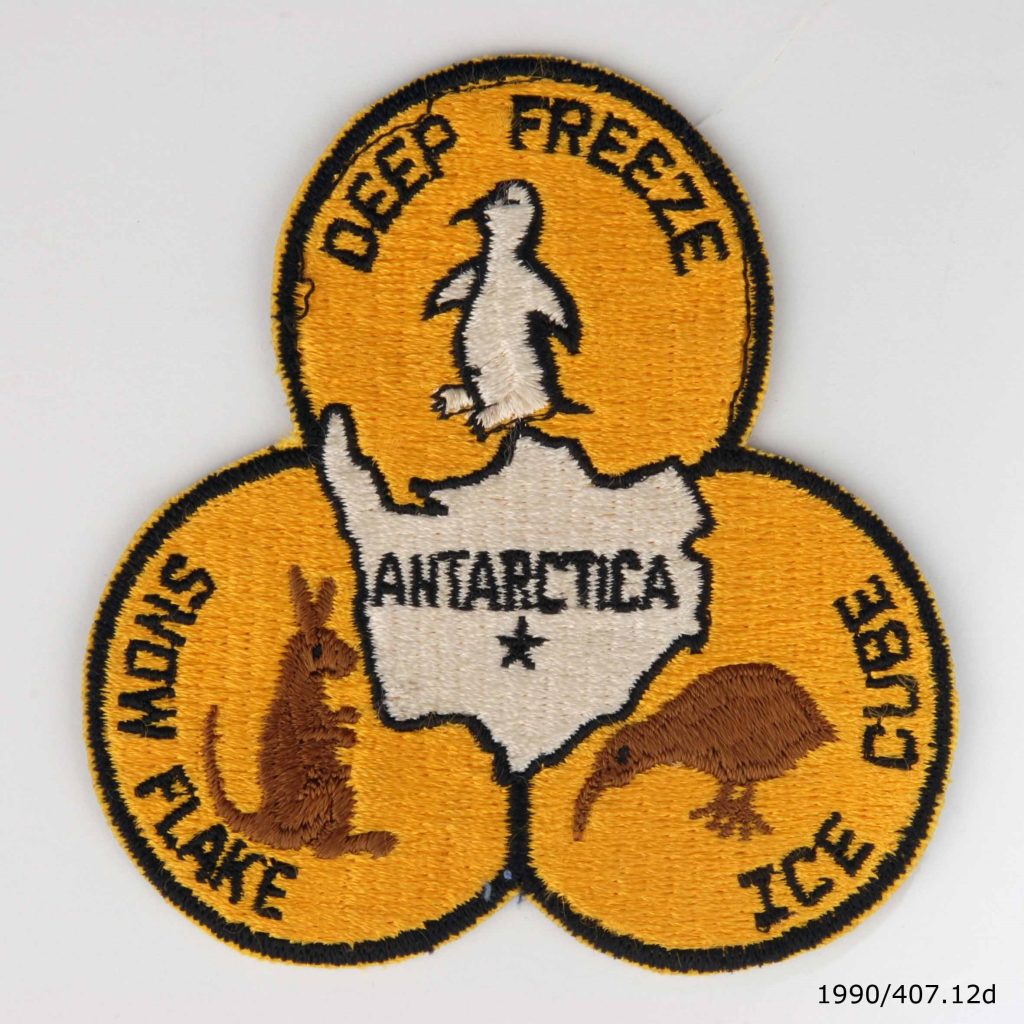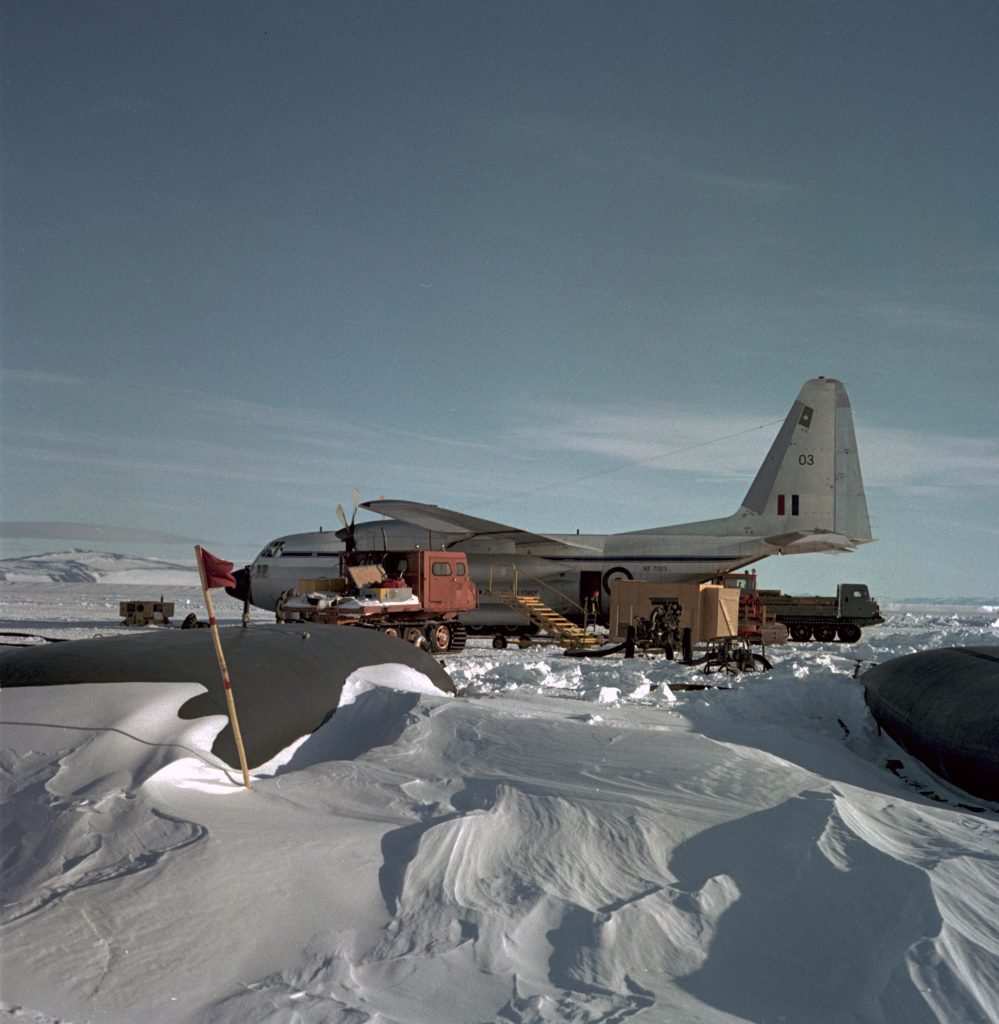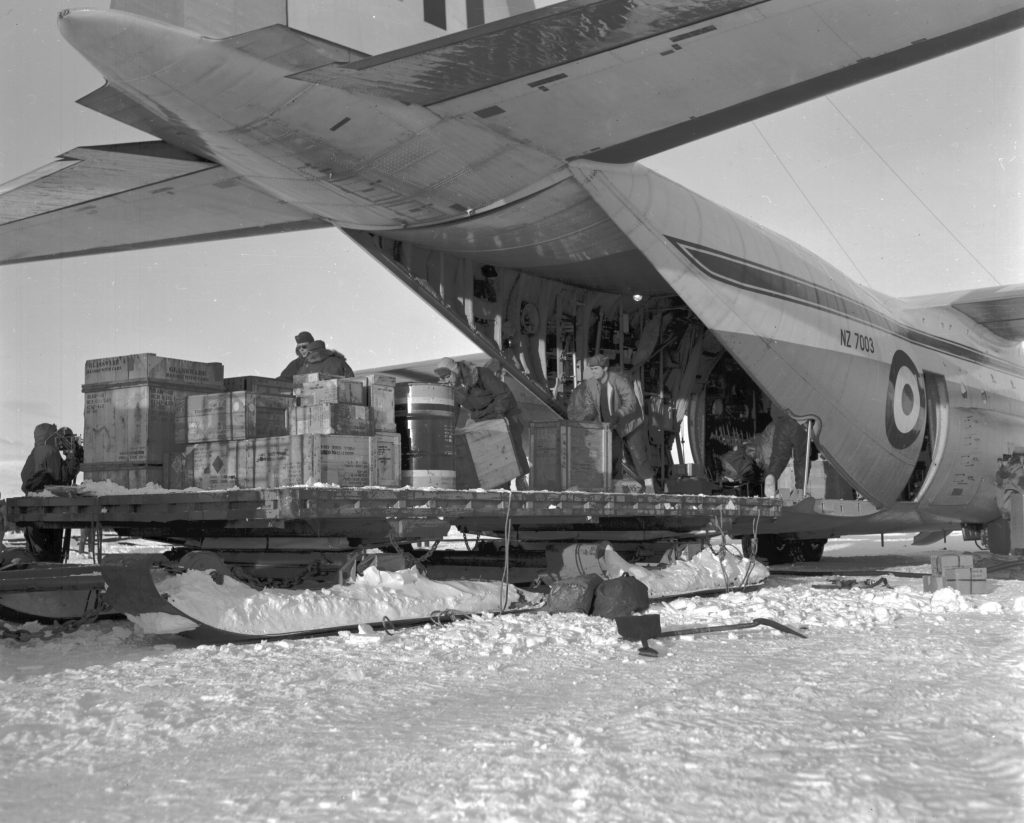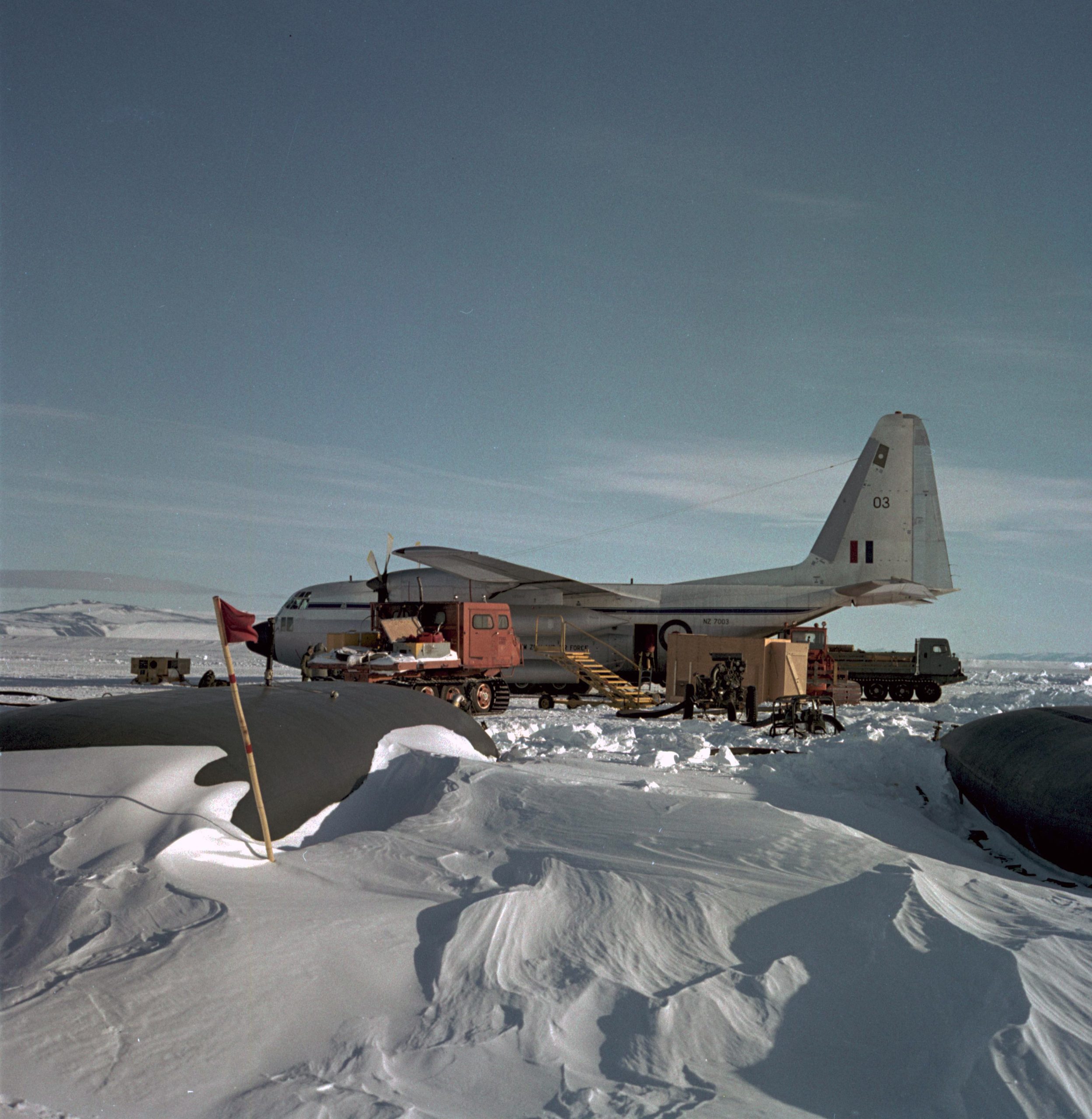As the C-130H Hercules retires from RNZAF service, we remember Operation Ice Cube I – the first RNZAF Hercules flight from Aotearoa to Antarctica, and the legacy which continues today.

October marks the start of the Antarctic summer season, but also this year, the final flights of the RNZAF’s C-130H aircraft to Antarctica – marking 60 seasons of Antarctic support.
As the C-130H Hercules retires from service, and the RNZAF’s new C-130J-30 Hercules’ first ice flights scheduled to start in November, it’s time to recall the very first RNZAF Hercules flight down to the ice.
The RNZAF’s first C-130H aircraft arrived in New Zealand in April 1965 and within six months of coming into service, flew to Antarctica for the first time on 27 October 1965. Hercules NZ7003 of No. 40 Squadron RNZAF left Harewood airport in Christchurch, landing at Williams Field at McMurdo Sound on the Ross Ice Shelf, 7.5 hours later. This was the very first NZ-Antarctic flight by an RNZAF aircraft, and since then, Hercules flights have been made every summer season in support of New Zealand’s Antarctic Research Programme and the United States’ Operation Deep Freeze.

No. 40 Squadron first became involved in Operation Deep Freeze in September 1965. The crews involved were briefed by the Commander, Headquarters Deep Freeze, and carried out familiarisation flights with VX-6 Squadron, US Navy. The initial flights were designated ‘Operation ICE CUBE’, which is where the name for these operations originated.
According to the No. 40 Squadron unit history, the plan was for the Hercules to make three return flights to Williams Field, McMurdo Sound where the US Navy had constructed a 10,000-foot (3,048-metres) ice runway for wheeled aircraft. The first flight was meant to overnight at Williams Field, but due to unserviceable equipment resulting in delays and an aborted flight, Wing Commander B.A. Wood, RNZAF, left Christchurch 27 hours late: “At this stage it was decided to turn the aircraft around as quickly as possible and blessed with fine weather and quick flights enabled the last flight to arrive at Christchurch only 12 hours behind plan.”

The wheeled C-130H had the advantage of being able to carry a greater payload than the ski-equipped version operated by VX-6. Even as the season progressed and the ice runway weakens as sea ice melts, the lighter Hercules could continue operations to a later date than the US C-141 Starlifter aircraft, extending the period in which priority freight could be airlifted to and from the ice. This was of great benefit to the New Zealand Antarctic Research Programme based at Scott Base, who were ‘particularly gratified to see at last the RNZAF participating in the lift between New Zealand and the Antarctic.’
Only very small modifications were made to the aircraft for the operation. These are described by the Engineering Officer in charge of the seven servicing personnel on the ice, Flying Officer J.F. Kelly, RNZAF:
‘Extra air was pumped into the oleos before leaving Christchurch but perhaps the most novel modification was the placing of a coil of rope around the nose-wheel oleo to overcome the shock of landing on rough ice.’
From Gateway to the Ice (Phillips, 2001)


The first Operation Ice Cube set records in 1965 for: Heaviest load (30,100 lbs) by C-130H to the Antarctic, also the heaviest load ever carried by an RNZAF aircraft anywhere. Fastest flight (6 hours 30 minutes) by C-130H aircraft from Williams Field to Christchurch. Total freight carried: 74,000 lbs.
To learn more about the history of the C-130H, you can read our recent blog on the purchase of this incredibly long-serving RNZAF aircraft.




